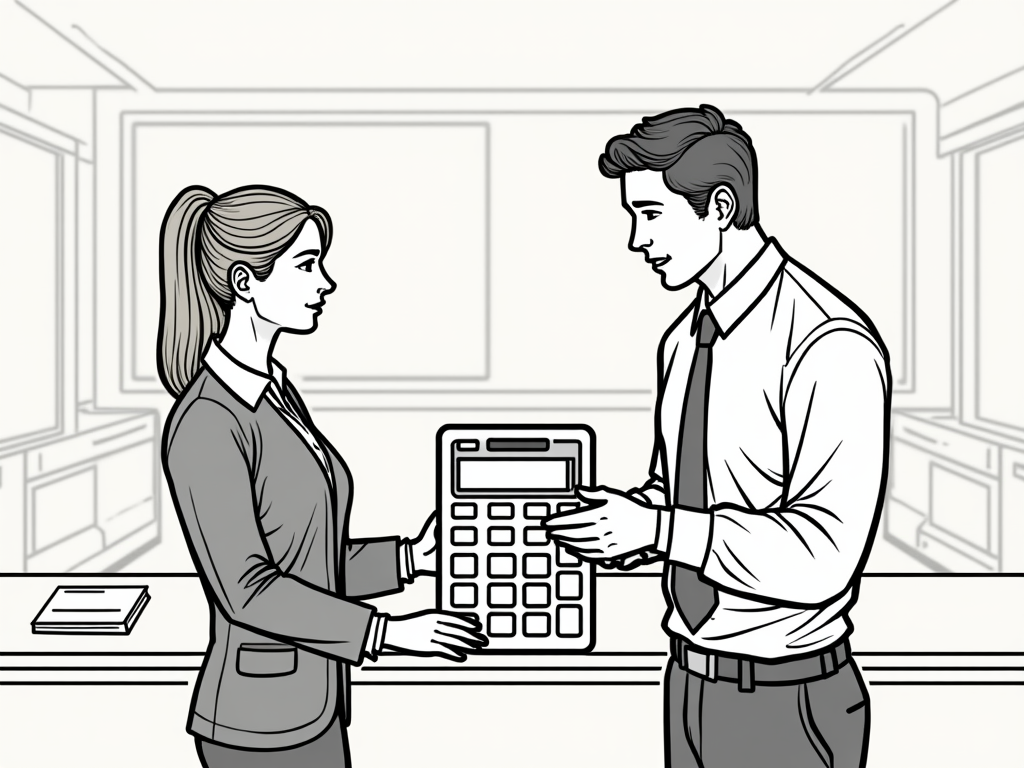
France Self-Employed Tax Guide: Navigating Micro-Entrepreneur Status in 2024
Reading time: 13 minutes
Table of Contents:
- Introduction to Micro-Entrepreneur Status
- Eligibility Requirements and Turnover Thresholds
- Registration Process and Documentation
- Tax Rates and Social Contributions
- The Versement Libératoire Option
- Making Declarations and Payments
- Benefits and Limitations of Micro-Entrepreneur Status
- Common Challenges and Solutions
- Conclusion
- Frequently Asked Questions
Introduction to Micro-Entrepreneur Status
Navigating France’s self-employment landscape can feel like trying to decode a complex puzzle—especially when you’re an expat or new to the French system. The micro-entrepreneur status (formerly known as auto-entrepreneur) represents France’s simplified business framework designed specifically for small, independent operators.
Created in 2009 and reformed several times since, this regime aims to reduce bureaucratic barriers for entrepreneurs, freelancers, and small business owners. If you’re contemplating self-employment in France, understanding this system isn’t just helpful—it’s essential for your financial planning and business compliance.
Let me share a quick scenario: When Sarah, an American graphic designer, moved to Lyon in 2022, she initially struggled with understanding how to legally bill her international clients. “I was overwhelmed by options until a colleague explained the micro-entrepreneur system,” she tells me. “Once I understood the turnover limits and flat-rate contributions, everything clicked into place.”
Throughout this guide, we’ll untangle the complexities of French self-employment taxation and provide you with practical, actionable strategies for optimizing your situation. Whether you’re a digital nomad settling in Nice, a craftsperson in rural Dordogne, or a consultant in Paris, this guide will help transform complex regulations into strategic opportunities.
Eligibility Requirements and Turnover Thresholds
The micro-entrepreneur status isn’t suitable for every self-employed person in France. Your eligibility depends primarily on your annual turnover and business activities.
Turnover Thresholds for 2024
The French government sets specific revenue ceilings that determine whether you can operate under this simplified regime:
- €188,700 for trading activities (buying/selling goods, providing accommodation)
- €77,700 for service-based businesses and liberal professions
- €188,700 for artisanal food service activities (restaurants, food trucks, catering)
It’s worth noting these thresholds have increased substantially from the original limits set in 2009, reflecting the government’s commitment to supporting small businesses. Exceed these limits for two consecutive years, and you’ll need to transition to a standard business structure with more complex accounting requirements.
Activities Excluded from Micro-Entrepreneur Status
Not all professions can operate under the micro-entrepreneur regime. Notable exclusions include:
- Agricultural activities (governed by a separate regime)
- Real estate rental businesses
- VAT-subject activities related to land/property development
- Certain regulated professions with their specific frameworks
Pierre, a web developer based in Bordeaux, learned this distinction the hard way. “I nearly registered as a micro-entrepreneur for my side business in real estate rentals,” he explains. “Thankfully, my accountant caught this before I proceeded. Understanding what activities are compatible saved me from potential compliance issues.”
Additionally, if you plan to practice a regulated profession (such as certain healthcare providers, architects, or legal advisors), you’ll need to verify that your qualifications are recognized in France before registering as a micro-entrepreneur.
Registration Process and Documentation
Setting up as a micro-entrepreneur in France has become increasingly streamlined, but attention to detail remains critical to ensure a smooth process.
Step-by-Step Registration Guide
- Prepare your documentation: Gather your ID (passport or residence permit), proof of address (less than 3 months old), and any professional qualifications required for regulated professions.
- Choose your business activity codes: Select the appropriate code(s) from the French APE/NAF classification system that best describe your business activities.
- Create an account on the official portal: Register at autoentrepreneur.urssaf.fr or through the combined business formalities center.
- Complete the online declaration: Fill out form P0 CMB (for commercial activities) or P0 PL (for liberal professions).
- Submit your application: Process your registration electronically and receive confirmation of submission.
The registration process typically takes 7-14 days, after which you’ll receive your SIRET number (your business identification number) and be officially registered in the appropriate business directory.
Common Registration Pitfalls to Avoid
Elena, a Spanish translator who moved to Strasbourg in 2023, shared her experience: “My biggest mistake was not being specific enough about my business activities during registration. I listed ‘translation services’ but didn’t specify ‘technical and legal translation.’ This created confusion when clients needed to verify my credentials for specialized work.”
Other common mistakes include:
- Failing to notify existing employers if you’re also employed (which may be contractually required)
- Not researching whether your activity requires specific insurance beyond standard liability coverage
- Overlooking local zoning regulations if operating from a residential address
- Choosing inappropriate business activity codes that don’t align with your actual services
Pro Tip: Before finalizing your registration, consider consulting with a specialized accountant for a one-time review. This typically costs €80-150 but can save thousands in potential corrections and missed opportunities.
Tax Rates and Social Contributions
The cornerstone advantage of the micro-entrepreneur system is its simplified approach to taxation and social charges, operating on a flat-rate basis determined by your business category.
Understanding the Flat-Rate System
Unlike standard businesses that calculate contributions based on net profit, micro-entrepreneurs pay a percentage of their gross revenue, regardless of expenses. This means zero accounting complexity but potentially higher taxes for businesses with significant operating costs.
| Business Category | Social Contributions Rate | Income Tax Rate (Optional) | Total with Optional Tax | What This Covers |
|---|---|---|---|---|
| Commercial Sales (Goods/Accommodation) | 12.3% | 1.0% | 13.3% | Healthcare, pension, family benefits |
| Services (Commercial/Artisanal) | 21.2% | 1.7% | 22.9% | Healthcare, pension, family benefits |
| Liberal Professions (CIPAV) | 21.1% | 2.2% | 23.3% | Healthcare, pension, family benefits |
| Liberal Professions (Non-CIPAV) | 21.2% | 2.2% | 23.4% | Healthcare, pension, family benefits |
Note: These rates are accurate as of January 2024 but are subject to annual revisions.
ACRE Reduction for New Entrepreneurs
First-time entrepreneurs may benefit from the ACRE scheme (Aide aux Créateurs et Repreneurs d’Entreprise), which reduces your social contributions by 50% during your first year of activity—a significant cash flow advantage during the critical startup phase.
Marc, a Canadian photographer who established his micro-enterprise in Nice, calculated the impact: “With annual revenue of €45,000 in services, the ACRE reduction saved me approximately €4,500 in my first year—capital I redirected toward professional equipment and marketing.”
To qualify for ACRE, you must:
- Not have benefited from the scheme in the previous three years
- Have genuine control over your business operations
- Not be expanding an existing activity
Application for ACRE is now automatically integrated into the micro-entrepreneur registration process, eliminating another bureaucratic hurdle for new business owners.
The Versement Libératoire Option
One of the most strategic decisions for micro-entrepreneurs concerns the “versement libératoire”—a system allowing you to pay income tax directly through your quarterly declarations rather than through the standard income tax process.
How the Option Works
Instead of declaring your business income on your annual tax return, this option lets you pay income tax as part of your quarterly contribution at flat rates of 1% for commercial activities, 1.7% for services, or 2.2% for liberal professions.
Whether this benefits you depends entirely on your personal tax situation. The versement libératoire is advantageous primarily for those in lower income tax brackets since the flat rates are designed to approximate the effective rates for modest incomes.
Eligibility and Strategic Considerations
To qualify for the versement libératoire option, your household’s reference tax income (revenu fiscal de référence) must not exceed €27,478 per part for income earned in 2022 (declared in 2023).
Consider Jeanne’s situation: A single graphic designer earning €40,000 annually as a micro-entrepreneur, with an effective income tax rate of 11%.
- With versement libératoire: She would pay 1.7% of her revenue (€680) for income tax
- Without the option: Her taxable micro-entrepreneur income (after 34% abatement) would be €26,400, resulting in approximately €2,904 in income tax
In Jeanne’s case, the versement libératoire presented clear savings of over €2,200 annually.
Pro Tip: The versement libératoire must be selected during initial registration or before February 28th of each subsequent year. This decision requires careful calculation based on your overall household income and can benefit from professional tax planning input.
Making Declarations and Payments
Compliance with declaration requirements forms the backbone of successfully managing your micro-entrepreneur status. Getting this right prevents penalties and helps you maintain accurate financial records.
Declaration Frequency Options
Micro-entrepreneurs can choose between monthly or quarterly declarations, with most opting for the quarterly system for its reduced administrative burden. Your declaration schedule remains fixed for the calendar year once selected.
The process has become increasingly digitized, with declarations now managed primarily through:
- The autoentrepreneur.urssaf.fr portal
- The mobile application “AutoEntrepreneur Urssaf”
Remember this critical point: You must file declarations even if your revenue for the period is zero. Failing to submit “néant” (zero) declarations can trigger automatic penalties and potentially jeopardize your micro-entrepreneur status.
Payment Methods and Deadlines
Declarations and payments follow a strict calendar:
- Quarterly declarations: Due by April 30, July 31, October 31, and January 31
- Monthly declarations: Due by the end of the month following the activity month
Thomas, a British consultant based in Paris, learned the importance of deadline management: “I missed my January declaration deadline by just two days my first year, resulting in a €46 penalty. Now I set calendar reminders ten days before each deadline, giving me ample time to prepare accurate figures.”
Payments can be made via:
- Direct debit (prélèvement automatique) – the most convenient method
- Online payment (télépaiement)
- Bank transfer (virement bancaire)
Pro Tip: Set up a dedicated business account exclusively for your micro-entrepreneur activity. This simplifies tracking income, calculating declarations, and provides clear documentation in case of tax inquiries. Many French banks offer specialized “professional” accounts with reasonable monthly fees between €8-20.
Benefits and Limitations of Micro-Entrepreneur Status
The micro-entrepreneur regime offers substantial advantages for certain business models but comes with significant limitations that may impact your long-term growth strategy.
Key Advantages
The primary benefits that attract entrepreneurs to this status include:
- Simplified accounting: No requirement for complex bookkeeping—just maintain a chronological record of income and expense receipts
- No VAT complications: Under the turnover thresholds, you neither charge nor reclaim VAT
- Predictable costs: Fixed-percentage contributions provide budget certainty
- Minimal startup costs: No minimum capital requirements and virtually free registration
- Flexible operation: Easily combine with employment or pause activity during slow periods
Ana, a Portuguese web developer in Montpellier, values this flexibility: “I maintain a part-time employment contract while developing my client base as a micro-entrepreneur. The ability to scale my independent work gradually without complex accounting has been invaluable during this transition phase.”
Significant Limitations
Despite its advantages, the micro-entrepreneur status presents several constraints:
- No expense deductions: You cannot deduct business expenses, potentially resulting in higher effective tax rates for cost-intensive businesses
- Limited revenue potential: The turnover ceilings restrict growth without transitioning to a different business structure
- Reduced social benefits: Pension contributions are proportional to declared income, potentially resulting in smaller retirement benefits
- Banking challenges: Some businesses may face difficulties securing loans or professional banking services under this status
- Credibility concerns: Certain clients, particularly large corporations, may prefer working with traditional business structures
David, an American management consultant, encountered this limitation: “After two years as a micro-entrepreneur, I needed to change my status. My business expenses represented about 35% of my revenue, and not being able to deduct these costs became financially unsustainable as my income grew.”
Common Challenges and Solutions
Even with its simplified framework, the micro-entrepreneur system presents several challenges that require strategic navigation.
Problem: Managing the Revenue Ceiling
Approaching the turnover threshold creates a difficult decision point: restrict your business growth or transition to a more complex business structure.
Solution: Monitor your cumulative annual revenue closely, especially in Q3 and Q4. Consider implementing a transition strategy when you reach approximately 70% of the ceiling:
- Begin consultations with an accountant about alternative business structures (EURL, SASU)
- Gradually adjust your pricing strategy upward to maximize revenue within limits
- Consider creating complementary activities under a different business category
Julia, an American life coach in Lyon, implemented a phased approach: “As I approached the service ceiling, I worked with my accountant to prepare for transitioning to an EURL. We used the final quarter to establish the new structure while I continued operating as a micro-entrepreneur, ensuring a seamless transition for my clients.”
Problem: Proving Professionalism to Corporate Clients
Some micro-entrepreneurs struggle to secure contracts with larger companies that may perceive the status as less professional or temporary.
Solution: Enhance your professional credibility through:
- Creating comprehensive, professional contracts that address liability and confidentiality concerns
- Obtaining appropriate professional insurance (Responsabilité Civile Professionnelle)
- Developing a professional website emphasizing experience and qualifications rather than business structure
- Offering detailed proposals with clear deliverables and timelines
Klaus, a German marketing consultant in Strasbourg, overcame this hurdle: “I initially lost a potential corporate client who questioned my micro-entrepreneur status. For subsequent pitches, I developed a professional information package explaining the French system and highlighting my comprehensive professional insurance. This proactive approach eliminated objections from my next three corporate prospects.”
Conclusion
The micro-entrepreneur system represents France’s commitment to fostering entrepreneurship through administrative simplification. When aligned with your business model and revenue expectations, it offers a streamlined path to self-employment with predictable compliance requirements.
Success as a micro-entrepreneur isn’t about perfect understanding from day one—it’s about strategic navigation and continuous learning. The system rewards those who maintain meticulous record-keeping, respect declaration deadlines, and proactively plan for potential transitions as their business evolves.
The most successful micro-entrepreneurs approach this status as one phase in their business journey—embracing its advantages while recognizing its limitations. Whether you’re testing a business concept, supplementing employment income, or establishing a small-scale service business, the framework provides a valuable entry point into French entrepreneurship.
As you proceed with your micro-entrepreneur journey, remember that connecting with professional advisors and fellow entrepreneurs can provide invaluable real-world insights beyond regulatory guidelines. Regional business support organizations like the Chambres de Commerce et d’Industrie frequently offer workshops specifically for micro-entrepreneurs—often available in English in major metropolitan areas.
Your entrepreneurial journey in France begins with understanding these foundations, but flourishes through practical application and community connection.
Frequently Asked Questions
Can I switch from micro-entrepreneur status to a different business structure if my revenue exceeds the thresholds?
Yes, you can transition to a different business structure when your revenue approaches or exceeds the thresholds. The most common transitions are to EURL (Enterprise Unipersonnelle à Responsabilité Limitée) or SASU (Société par Actions Simplifiée Unipersonnelle) structures. Begin planning this transition when you reach approximately 70-80% of the ceiling, as the process typically takes 1-3 months. Consult with an accountant to determine which structure best aligns with your business model, personal liability preferences, and tax optimization strategy. The transition will require new registration, establishing articles of incorporation, and potentially opening a new business bank account.
How does the micro-entrepreneur status impact my pension contributions and future retirement benefits?
As a micro-entrepreneur, your pension contributions are proportional to your declared revenue, with approximately 7% of your social contributions allocated toward retirement. This means lower contributions during periods of modest revenue will result in fewer quarterly points accumulated toward your French pension. To mitigate this impact, consider establishing a complementary private pension plan (Plan d’Épargne Retraite Individuel or PER) to supplement your mandatory contributions. For those planning long-term residence in France, consistently declaring higher revenues (where legitimate) will improve your eventual pension benefits. International entrepreneurs should also investigate whether bilateral social security agreements exist between France and their home country that might allow for pension coordination.
Am I required to charge VAT (TVA) as a micro-entrepreneur?
No, micro-entrepreneurs operate under a VAT exemption system called “franchise en base de TVA” as long as their revenue remains below specific thresholds (which are higher than the micro-entrepreneur regime limits). This means you neither charge VAT to your clients nor recover VAT on your purchases. You must indicate this VAT exemption on your invoices with the phrase: “TVA non applicable, art. 293 B du CGI.” If your business involves significant purchases where VAT recovery would be advantageous, the micro-entrepreneur status might not be financially optimal. Should you approach the VAT registration thresholds (currently €94,300 for goods and €36,500 for services), you’ll need to monitor your revenue carefully, as exceeding these limits for two consecutive years would require VAT registration while potentially still operating as a micro-entrepreneur.



